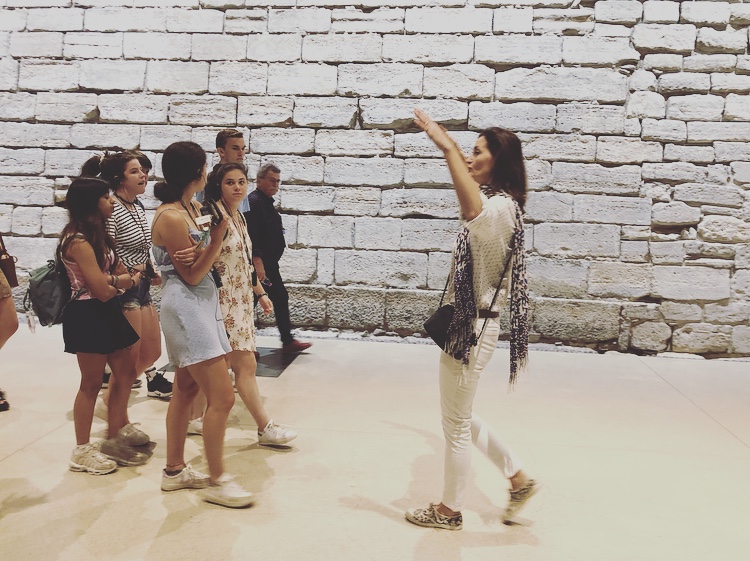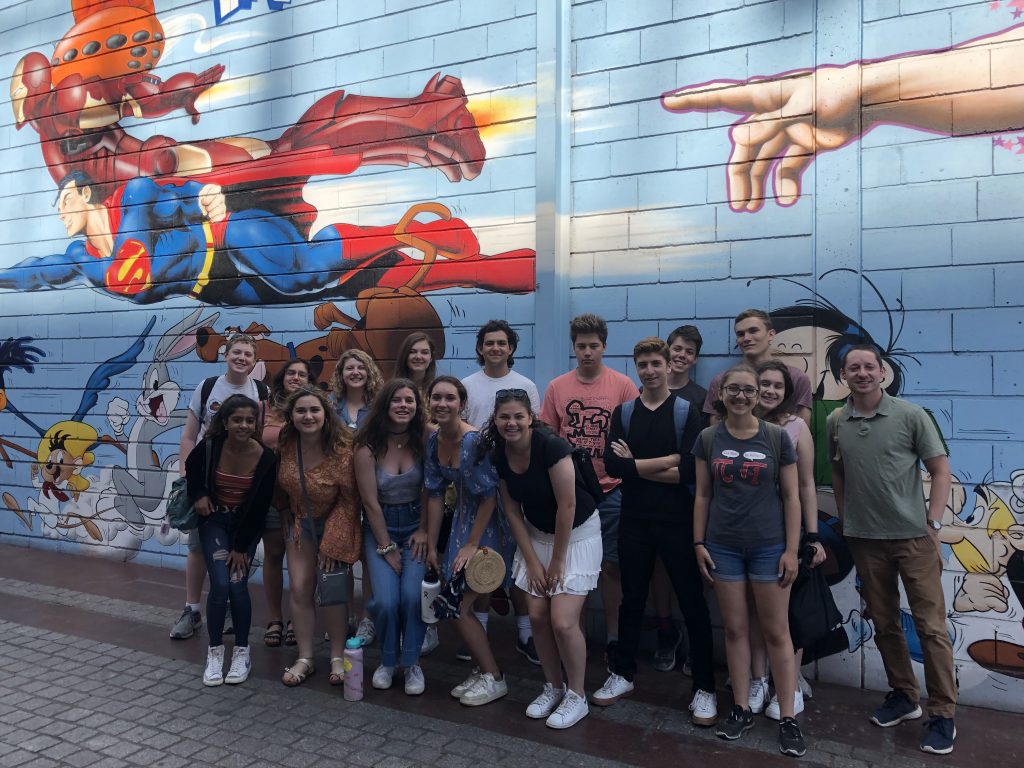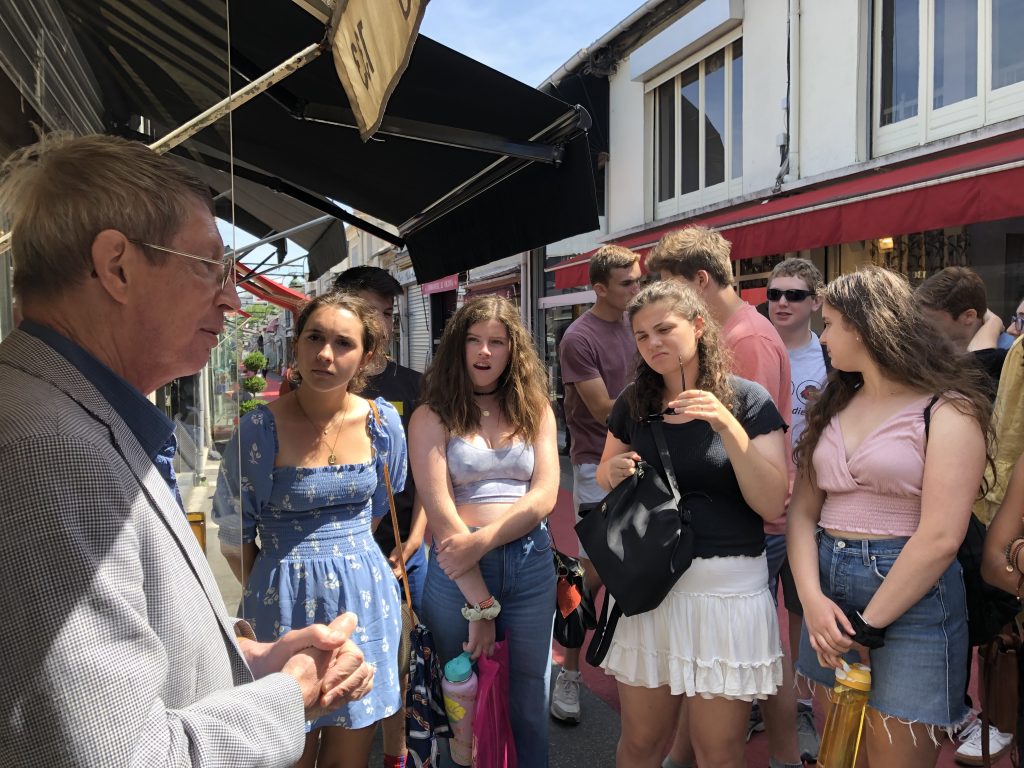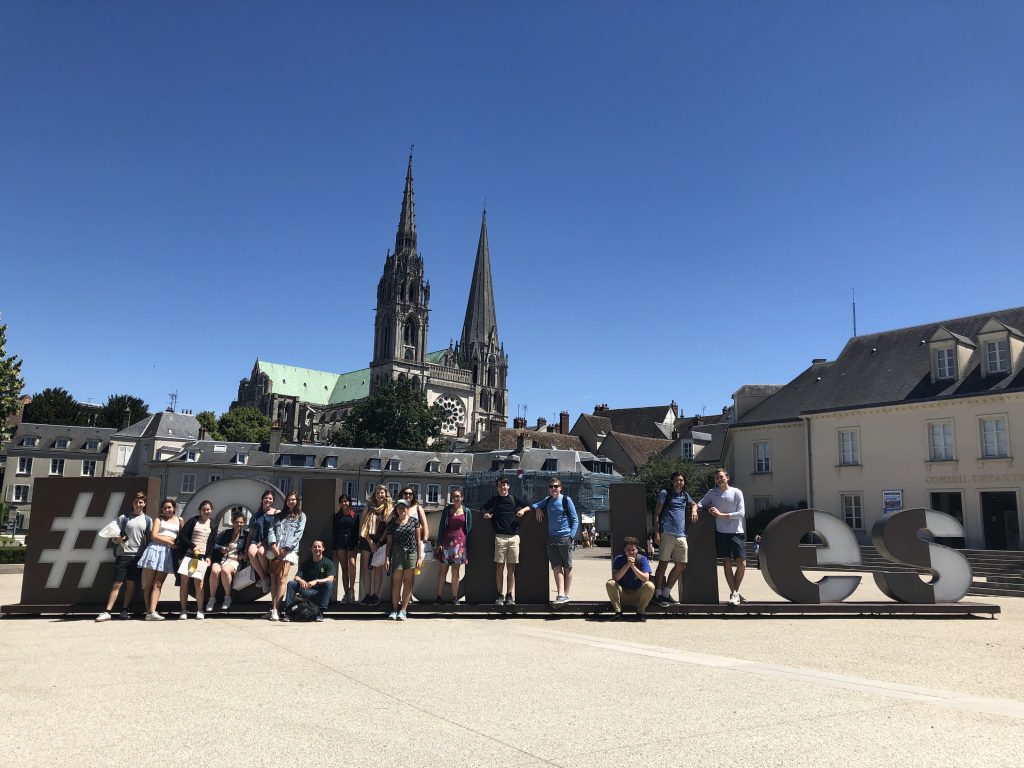Dear families and friends,
During our time in Paris, our theme was “L’Art” and our central questions were, “How does art influence everyday life in Paris?” and “What is art?” Students participated in observing different forms of art, from world famous museums to street art, from music to fashion. In the student perspectives that follow, students recount Parisian art and our Putney adventures in Paris.
Bonne lecture!
Tia et Elliot
Bonjour!
While in Paris, we went to many museums to experience the art and culture of the city, including Le Louvre, Le Musée D’Orsay, L’Orangerie, and Le Centre Pompidou. At Le Louvre, we saw many of the most famous artworks in the world, including la Joconde (the Mona Lisa!), la Victoire (Winged Victory), and Venus de Milo. At the Musée D’orsay, we saw many famous impressionist works, and learned about how different artists and artistic movements had influenced each other, as well as the development of contemporary art today. At the Centre Pompidou, we saw many famous modern art works as well as the exhibits of Dora Maar and Prehistory. Finally, at L’Orangerie, we saw the most famous Monet paintings in the world, spanning entire rooms that were filled with large canvases of his incredible scenery paintings.
Throughout our time spent in museums in Paris, we learned about different styles of art, influences to artists, and got to see some of the most popular pieces of art in the world. These visits were both informative and truly incredible.
À bientôt!
— Ila, Hayden, Ally, Celeste

Bonjour à tous et à toutes!
Over our last week in Paris, we saw art ranging from prehistoric time to the modern times. Whether we saw Mona Lisa (La Jaconde) or early carvings from cavemen, it was all magnificent. We visited the Louvre, L’Orangerie, Le Centre Pompidou, and the Musée D’Orsay. Filled with priceless works of art and statues, we were guided through the gallery with wonder. We saw the impressionist works of Monet, Manet, Van Gogh, Cézanne, Matisse, and Renoir in full display. The photos and paintings of Dora Maar in the modern art exhibit in Pompidou inspired us to look beyond. The sculptures from Greek and Roman times such as the beautiful Venus de Milo were more than we could have imagined. We learned how to read stained glass and interpret the history beyond its bright hues. The windows of the 800-year-old cathedral at Chartres display not only historical religion from before the King James Bible, but also the lives of the people who built it. We will not forget our experiences as we absorbed the art displayed in Paris and beyond.
Par Dahlia, Josh, Bodie, & Kate


Bonjour tout le monde,
We woke up at the wonderfully early hour of 6 AM and headed out to Montparnasse via the Parisian metro system. We feasted on croissants from the world famous Paul, obsessed over Starbucks, and boarded the train for a nice nap. We arrived and walked past the #CHARTRES sign to the Chartres Cathedral, where we were introduced to our 86-year-old guide, Malcolm Miller. He taught us how to read stained glass windows and showed us the magic behind 7 and 40 (two prominent religious numbers). Afterward, we had lunch and had the opportunity to explore the cute town of Chartres. We then headed back to Paris for dinner and a delicious three-course meal, then took a boat around the city on the Seine. We finished off the day with a reunion, debriefing our long day. We then went back to the hotel for some well-deserved sleep.

Salut à tous de Paris!
As we’ve walked around Paris, it has become apparent that the streets were not designed for automobiles. As Nicholas experienced first hand when he narrowly avoided a bike, the narrow cobbled streets were meant for foot traffic or people on horseback. Similarly, many of the buildings in Paris were built for beauty and have had to adapt to suit modern day functions. The Louvre, a former palace, or the refurbishment of a stunning train station into the Musée d’Orsay are prime examples of this. Most apartment buildings are constructed from stone with small metal balconies and these characteristics stretch from arrondissement to arrondissement.
The most striking buildings are not the skyscrapers we have in the U.S. but intricate churches and palaces that functioned as the centers of life in religious times. As in many historic cities, when following the winding roads of Paris, there are nods to many past times in architecture. With a mix of Gothic gargoyles and distinct industrial aspects, the city is truly a map through time.
Au revoir,
Zara, Maddy, Nicholas, and Jason

